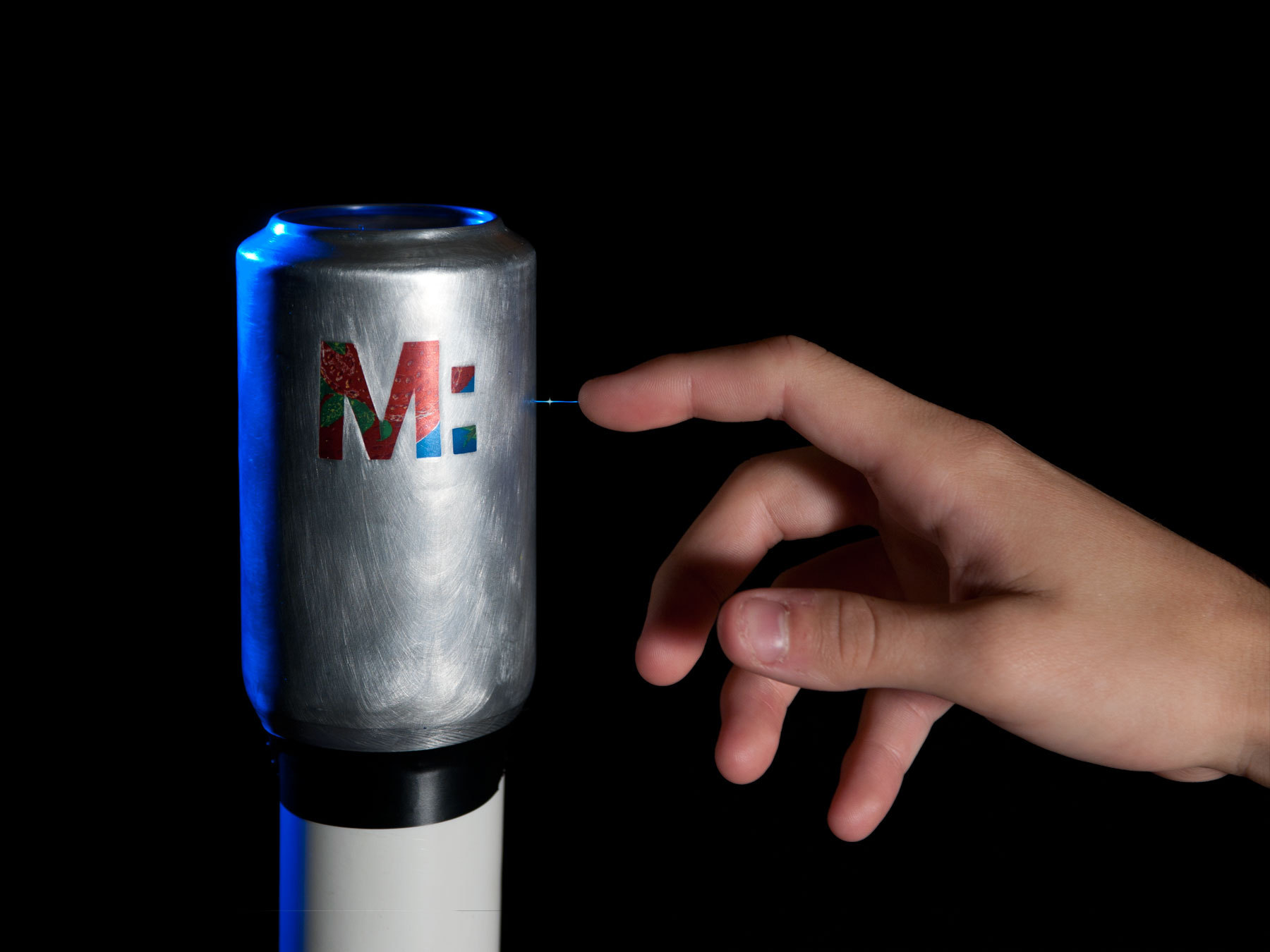When I was younger, I spent hours perusing Bill Beaty’s electrostatics web pages. At the time, I didn’t achieve any real successes trying to build his high-voltage contraptions, and so my interest waned.
Years later, I saw someone online use a soda can as a collector for their Van de Graaff generator, and all my childhood memories of futzing with styrofoam and foil came rushing back. I made my first sparks that afternoon, after a quick stop at our local surplus store.
Here’s the simple design I came up with after consulting several tutorials. Using this device, I’ve generated thick, bright sparks 3″ long, and faint sparks 6″ long. Hold your finger close to it in a darkened room and you will see an eerie blue corona around your fingertip.
How It Works
There are 2 types of Van de Graaff generators. This one uses the triboelectric effect, in which certain materials become charged by contact with other materials — like when you rub a balloon with your hair.
During operation, a motor and roller at the bottom of the generator drive a rubber belt around a glass roller at the top, which creates a negative charge on the belt. A metal brush transfers this charge to a soda can, which is able to store a large amount of charge because it is both hollow and a conductor. The belt meanwhile becomes depleted of free electrons and needs to be replenished, and so a second brush at the bottom pulls in charge from whatever it’s connected to.


